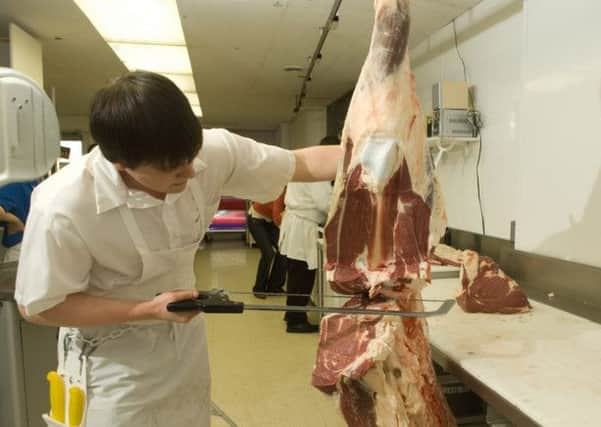QMS takes upbeat long view of beef prices


In his analysis of the UK market, he said that abattoirs had handled 1.25 cent per more prime cattle over the first quarter of the year than they did in 2013.
The March figure this year was 4 per cent higher than 12 months ago. The Scottish beef slaughtering figures also rose, with the abattoir kill in March 2.5 per cent higher than 12 months ago.
Advertisement
Hide AdAdvertisement
Hide AdAmplifying the effect that the increased numbers have had on price has been the fact there has also been an increase in carcase weights, leaving the trade 6 per cent more beef than last year.
“During March, UK average carcase weights for steers were at their second-highest level this century, while heifer weights were the highest seen since before 2000,” he said. “Inevitably, as carcases get bigger so too do the cuts and joints taken from them. As the physical size of the retail cuts increases, the number of potential buyers diminishes and some seemingly high-value cuts have to be used in lower-value products or sold away from the premium retail market.”
The cull cow price has been affected by oversupply, with Ashworth reckoning there was some 13 per cent more cow beef on the UK market this year.
“It is very clear that domestic beef supplies are much higher than last year and, as a result, price comes under pressure.”
Looking across the Irish Sea, the supply to abattoirs has been some 13 per cent higher than normal and, as a result, Irish beef is now quoted at 14 per cent below the UK price. This increased Irish production has led to an increase in deliveries to the UK, adding to increased availability.
Despite the gloom, Ashworth was optimistic, reckoning the likelihood was the trade would begin to turn around soon.
Looking at Scottish calf registrations in the second quarter of 2012 or cattle which will reach slaughter age over the next six months, the figures were 5 per cent lower than the year previous and over the second half of 2012 they fell 3 per cent.
In 2013, Scottish calf registrations fell 5 per cent.
The situation is slightly different across GB as a whole, with calf registrations in 2012 1 per cent higher than 2011 but then falling 3 per cent during 2013.
Advertisement
Hide AdAdvertisement
Hide AdHowever, Ashworth pointed out all of the increase in GB calf registrations during 2012 was due to increased dairy registrations, with beef sired registrations falling by 2 per cent.
A similar scenario is shown by the Irish December census, which showed a rise of 6 per cent in one-to-two year old cattle followed by a drop of 5 per in the number of cattle aged less than a year.